Ceredo-Kenova Historical Marker
Introduction
Text-to-speech Audio
Images
This historical marker briefly summarizing the foundings of Ceredo and Kenova was erected in 1975. Image obtained from the Historical Marker Database.
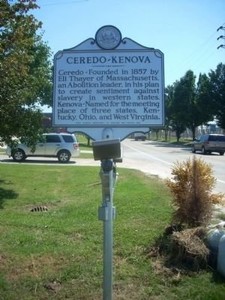
The marker stands next to U.S. Route at the western entrance to Kenova, facing the bridge to Catlettsburg, Kentucky. Image obtained from the Historical Marker Database.
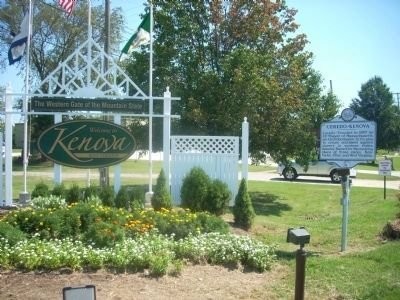
Congressman Eli Thayer (1819-1899) was a proggresive politician and abolitionist most famous nationally for organizing anti-slavery emigration to the Kansas Territory. In 1857 he created Ceredo as an attempt to win over Southerners to the Northern ideals
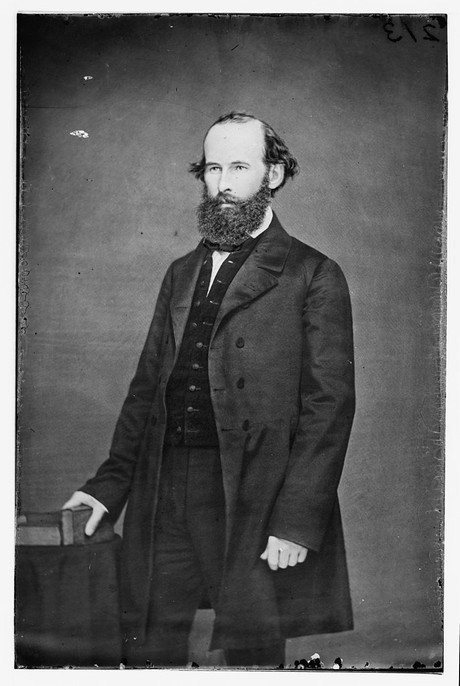
Kenova was established by the Norfolk & Western Railway at the site of a new bridge it built across the Ohio River in the 1890s. Image courtesy of the Kenova Historical Commission.
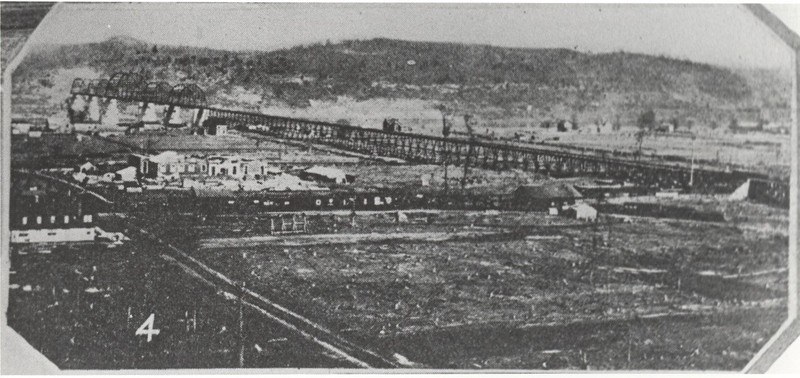
The communities of Ceredo and Kenova were symbolically united in 1923 with the opening of Ceredo-Kenova High School, which brought together students from both towns. The school closed in 1998. Image courtesy of the Ceredo Historical Society Museum.
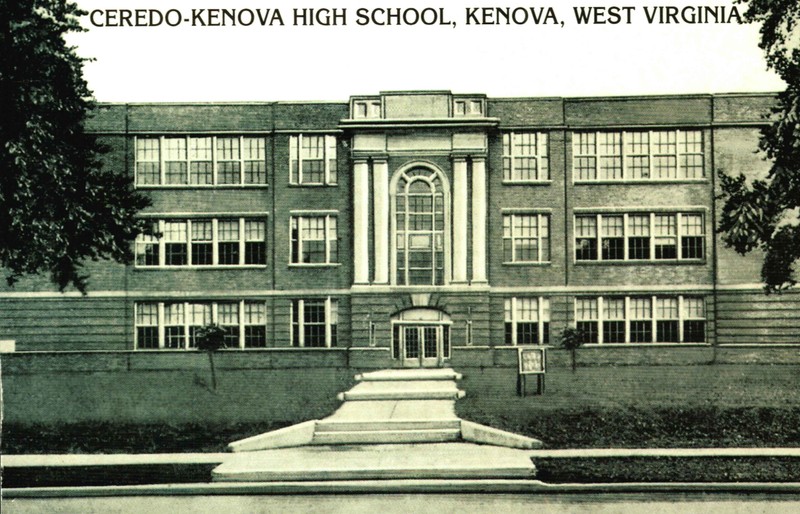
Backstory and Context
Text-to-speech Audio
The town of Ceredo was the first major settlement in northern Wayne County. In the spring of 1857 a Massachusetts Congressman named Eli Thayer announced his intention to build a manufacturing city in western Virginia, populated with New England immigrants. Thayer had previously achieved national notoriety for his involvement in the Bleeding Kansas conflict. Determined to ensure that Kansas would be admitted to the Union as a free state, Thayer in 1854 helped organize the New England Emigrant Aid Company, which sent northern abolitionist settlers to the Kansas Territory to influence the vote when the issue of slavery came up for election. Now in 1857 Thayer had created an ambitious plan to develop a series of industrial settlements in the Southern states with northern immigrants. His theory was that settling tradesmen and investors would spur the creation of manufacturing businesses, which were lacking in the predominantly-agricultural South. This infusion of industrialization would reform the southern economy and, ideally, compel southerners to abandon slavery in exchange for more profitable enterprises.
Thayer’s emigration plan was widely publicized across the country, where it was both praised and vilified by newspapers. Some proclaimed that the settlements would revitalize southern states, particularly Virginia, while others called it a scam or a thinly-veiled assault on slavery. Thayer, with a group of supporters and investors, formed the American Emigrant Aid and Homestead Company to facilitate emigration. He then purchased a tract of land on the banks of the Ohio River in Wayne County, near the mouth of Twelve Pole Creek. This was to be his first settlement; Thayer named it Ceredo after Ceres, the Roman goddess of the harvest.
Due to financial issues Ceredo became the only town established by Thayer and the Homestead Company. The town grew slower than expected, and no more than 500 northern settlers arrived. The final blow to Thayer’s plans came with the Civil War in 1861. Ceredo formed the bastion of Union support in the area, while the rest of Wayne County held mostly southern sympathies. For the first few years of the war a Union regiment, the 5th West Virginia Volunteer Infantry, was stationed in the town to protect it from hostile locals. During the last years of the war however, the 5th WV was deployed elsewhere, and Ceredo fell victim to guerilla raids. By the end of the war much of town’s infrastructure was destroyed, and the majority of the northern emigrants had fled.
After the war Eli Thayer transferred ownership of Ceredo to his friend and key investor Charles B. Hoard, a Congressman from New York. Under Hoard and his descendants Ceredo would rebuild and become a respectable small town, although it never achieved the success originally envisioned for it. It was officially incorporated in 1866.
The site of present-day Kenova was originally known as Virginia Point, as it was the westernmost point in Virginia prior to the creation of West Virginia. In 1855 the Morgan family, the area’s absentee landowners, attempted to create a town there called Morganza in anticipation of the planned construction of railroads in the area. Neither the town nor the railroads came to fruition, and the settlement fizzled out when nearby Ceredo came in 1857. The area remained largely vacant and sparsely settled for the next few decades.
During the late 1880s the
Norfolk & Western Railway decided to build a railroad through the area to
connect coalfields in the southern counties of West Virginia to the northern
states. The N&W purchased the land at Virginia Point and dispatched a man
named Levi Peck to lay out a town to service the new railroad. Work began in
1889 with streets being laid out and a railroad bridge under construction to
cross the Ohio River. The original name for the settlement was intended to be
Chatarawha, supposedly a Native American word. By 1890 the name was changed to
Kenova, a combination of the names Kentucky, Ohio, and West Virginia. The town
was officially incorporated in 1894. It flourished over the next several years
with the construction of a large hotel, an ornate train station, and the
opening of many businesses. Today Kenova is the largest town in Wayne County.
Sources
Bailey, Kenneth. “Civil War Ceredo, A Northern Experiment” (video of lecture, West Virginia Archives and History Library, Charleston, May 6, 2014). Accessed April 1, 2017. http://m.youtube.com/watch?v=Ehe4tu1FyPE.
“Ceredo-Kenova.” Historical Markers Database. Accessed August 18, 2018. https://www.hmdb.org/marker.asp?marker=35202
“Ceredo Town History Full Of Interest.” Wayne County News. March 17, 1927. Accessed August 21, 2018. http://www.wvculture.org/history/wcn/wcn270317.html
“History of Ceredo.” Town of Ceredo. Accessed August 21, 2018. https://townofceredo.com/history
Napier, Mose A. Ceredo: It’s Founders & Families. Ceredo: Phoenix Systems, Ltd., 1989.
Rice, Otis K. “Eli Thayer and the Friendly Invasion of Virginia.” The Journal of Southern History 37, no. 4 (Nov., 1971): 575-596. Accessed March 15, 2017. http://www.jstor.org/stable/2206547.
Stewart, Fay J. “Ceredo-Kenova: West Virginia’s Gateway to the West.” Master’s thesis, West Virginia University, 1942.
Thompson, Robert M. Pioneers, Rebels, and Wolves: A History of Wayne County. Self-Published, Lulu Press, 2010.
Thompson, Robert M., and Samantha L. Thompson. Aging Wonders: The Birth of Ceredo-Kenova. Self-Published, 2011.
Thompson, Robert. “Robert Thompson: Town of Ceredo founded with an agenda.” Herald Dispatch. March 27, 2016. Accessed March 30, 2017. http://www.herald-dispatch.com/features_entertainment/robert-thompson-town-of-ceredo-founded-with-an-agenda/article_8eae26da-5895-5c7f-8747-cbc407dd9505.html
Thompson, Robert, Jay O’Dell, Stanley Wood, and Michael Hupp. “Wayne County History.” Wayne County News. February 27, 2013.
Thompson, Robert. “The early days of Kenova: Town grew from the ill-conceived Morganza to largest in Wayne County.” Herald-Dispatch. May 7, 2016. Accessed August 21, 2018. http://www.herald-dispatch.com/features_entertainment/the-early-days-of-kenova-town-grew-from-the-ill/article_b406eed5-30a5-5e3c-9317-12f52e65b535.html
Wolnisty, Claire. “Thayer, Eli.” Civil War on the Western Border: The Kansas Missouri Conflict 1854-1865. Accessed March 30, 2017.
Images 1-2: https://www.hmdb.org/marker.asp?marker=35202
